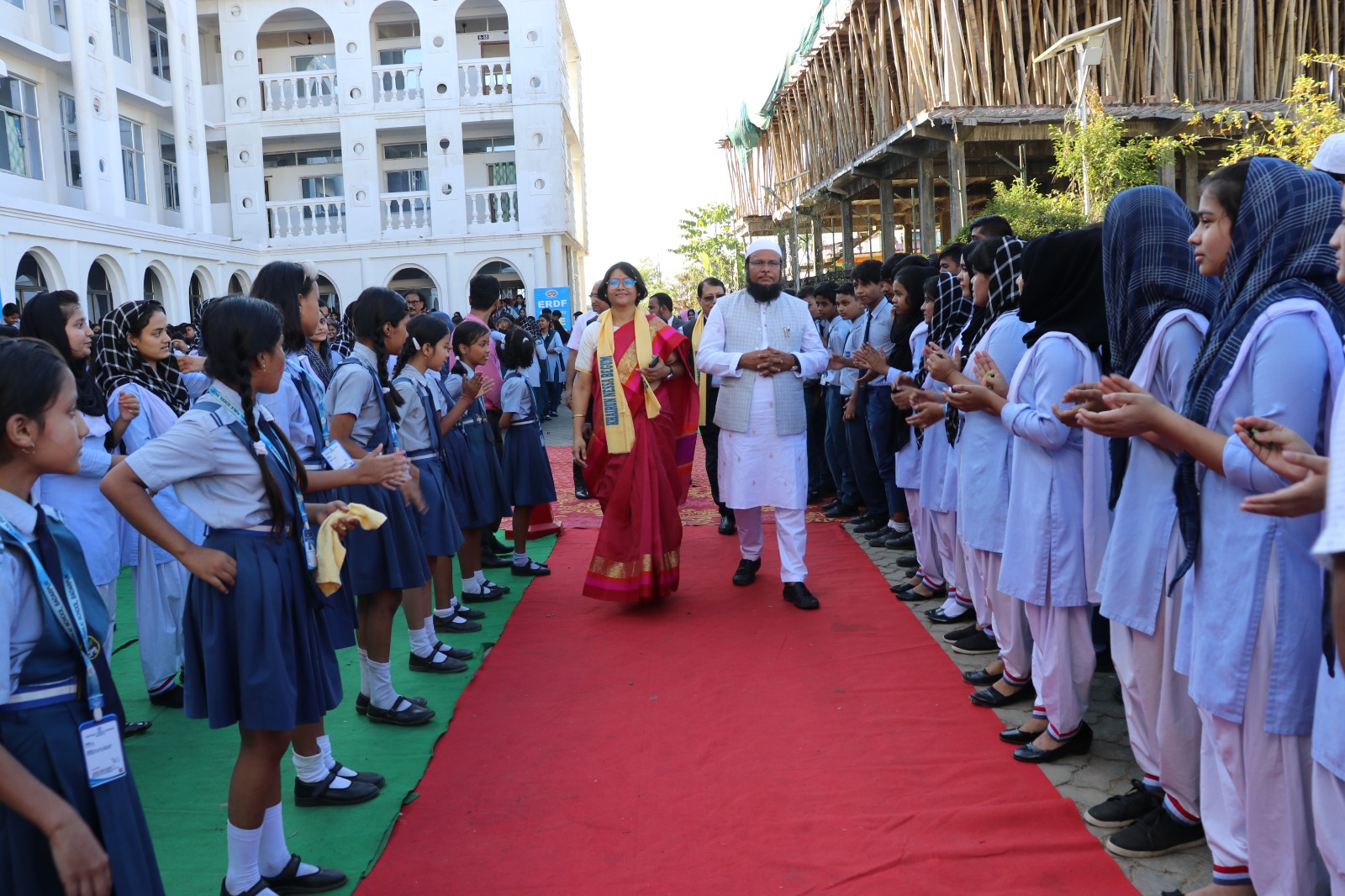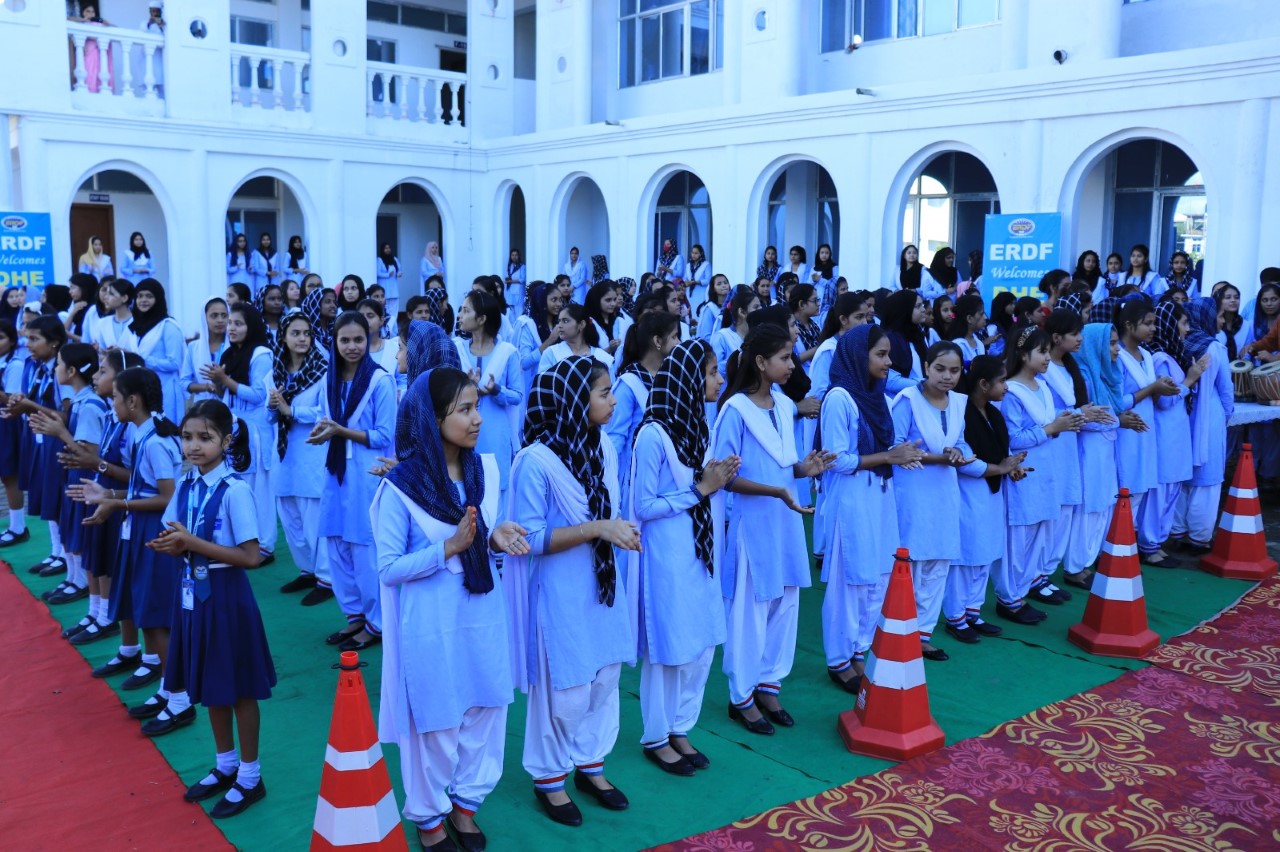.webp)
Mahbubul Hoque
In 2015, the Department of Sociology at Aligarh Muslim University undertook a study on the ‘Educational Backwardness of Muslim Women in India.’ One of their many observations was that, contrary to the popular perception that religious conservatism among Muslims somehow militates against educating girls, current research indicates that patriarchal values, along with poverty and financial constraints, are the major causes that prevent Muslim girls from accessing modern or secular education despite a strong desire and enthusiasm among Muslim women to go for modern and higher education. In this dismal scenario, the hope for improvement in the educational status of women can be materialized through concrete and sincere efforts.
The absence of a conducive atmosphere is a principal cause for the lack of higher education among Muslim women of Assam in general and Barak Valley in particular. Society at large feels that the girl child is a liability and will leave the parent’s house one day or the other. So, it’s futile to invest a large sum of money in her post-school education as the direct benefits will not return to the parents. This is a wrong concept. An educationally-empowered girl is a strong person who can meet any situation in life with courage and determination. Moreover, higher education ensures that she will be independent in the long run, both financially and intellectually.
The main challenge of Muslim women in the Barak Valley lies in the overall educational backwardness of the community. When modern education started in Barak Valley in 1863 with the establishment of Silchar Grammer School, Barak Valley Muslims were averse to school education. They were pursuing Madrassa Education. As a result, in the eighties of the nineteenth century, out of about 180 school students, only 17 students were Muslim – and all of them were boys.
School education for girls was a social taboo then. Only in the middle of the 20th century, few girls started to go to school. The first woman to graduate in Barak Valley was in 1962. The late start of modern education and the overall educational backwardness of the Muslim Community in Barak Valley are the main challenges for Muslim Women in Barak Valley.

Students welcoming inspection team of the Assam government
Another challenge is that in the Barak Valley, the Muslim Society is very conservative. The Purdah system is still followed. It is family dishonour to allow their females to appear in public. Parents want their sons to be educated and to be bread earners. They are not motivated to educate their daughters as they would leave home after marriage.
One of the challenges for higher education for women of the Valley is the lack of accommodation for girls in towns where colleges are situated. Moreover, prejudice against co-education, the Islamic value system, and the matrimonial problem of educating girls also exist. However, the situation is changing nowadays, and society accepts women’s education as necessary.
In this context, the initiative of the Guwahati-based ERD Foundation and the educational institutions run by the organization in Assam and Meghalaya are worth mentioning. It is a unique example in the country that the University of Science and Technology Meghalaya (USTM) has 57% girl students and 75% women employees. Although this number may not be proportionate, it is an encouraging one for Muslim women to participate and has set an example for women’s higher education.

Students of institutions of ERD Foundation in Assam
Khairun Nessa Begum Women’s College, the first women’s college in Barak Valley, was established in Badarpur in Karimganj district by ERD Foundation in 2005. The college is now in the process of elevation to a women’s university—the first-ever private women’s university in India. The objective behind the establishment of the women’s university is that this will encourage the parents of Muslim girls in the region to send their daughters to pursue higher education.
Parents are always apprehensive about whether their daughters will get a favourable environment in the institution to continue their higher education and at the same time follow their religious customs such as prayers and keeping roja, taking sehri during the month of Ramazan, etc. Parents feel unsafe, which is not correct. Once they let their daughter study in a higher educational institution, they can also attract the attention of the authorities to support their special needs.
The recent hijab issue related to educational institutions has created much apprehension among conservative Muslim families. How the religious families can overcome the challenges in higher education? Only if allowed to pursue higher education the girls will know the significance of hijab. If we ban hijab, they are forbidden to join mainstream education. To bring them to mainstream education, we must create an environment for them so that they come, mix with others, get educated, and understand.
The masjids, imams, and clergy can lead in promoting higher education among Muslim girls. They can simultaneously do much to remove the misgivings and negative ideas many people harbour in this connection. The importance of higher education among girls could be a topic of frequent discourse in the Friday sermons of the masjids. Isn’t it ironic that the first university of the world in Fez, Morocco was started by a Muslim woman, Fatima bint Muhammad Al-Fihriya Al-Qurashiya in 895 CE.
The absence of reliable and trustworthy institutions for higher education within a reasonable distance from the woman’s town or village is another detrimental factor in higher education. Parents desire that the institution should be within a reasonable distance so that they can frequently visit their ward and, if necessary, interact with the faculty to find out about the progress of the student in her pursuit of higher education. In this respect, the Khairun Nessa Begum Women’s College in Badarpur may be considered a path breaker in this direction. This example needs to be replicated in other parts of Assam.
The cost of higher education is high and beyond the reach of many families, even though their daughter’s performance at the school level is very impressive, and their desire to continue education is fathomless. The Government of India enacted the National Commission for Minority Educational Institutions (NCMEI) Act, 2014, to constitute National Commission for Minority Educational Institutions and to provide matters connected therewith. The Ministry of Minority Affairs implemented various programmes and schemes such as Post Matric Scholarships, Maulana Azad National Fellowship Scheme, Naya Savera, Padho Pardesh, Nai Udaan, and MAEF National Scholarships. But today, the budgets have been curtailed, or the schemes have been rendered inactive.
Scholarships for the higher education of Muslim women should be provided both by the public and private sectors. The hostel in the institutions should include facilities so that Muslim girl students can study while following their religious duties. The role of NGOs and community leaders in offering scholarships is indispensable.
Society today is aware of the importance of education for the girl child. Every mother wants their girl child to be educated. But due to financial and environmental challenges, many cannot do this. Therefore, stakeholders of the community must come forward and establish such kind of institutions so that either they will get a comfortable environment and support to study or, if they are financially sound, they will get all kinds of infrastructural facilities.
ALSO READ: Nargis, Hafiza and working hard against poverty, society to become doctors
Once upon a time, education for the girl child was neglected. But now the positive thing about society is that people are becoming aware of the importance of education for their girl child. The parents want to provide higher education to their gild child, but due to an absence of a conducive environment, they do not want to send their daughters for higher education. This is one of the reasons for early marriages too. The call of the hour is that the stakeholders of society must come forward to overcome the challenges by trying to create a favourable environment in the higher educational institutions and establishing institutions with such a conducive environment.
(The Writer is the Founder and Chancellor of University of Science & Technology Meghalaya & eminent educationist)
